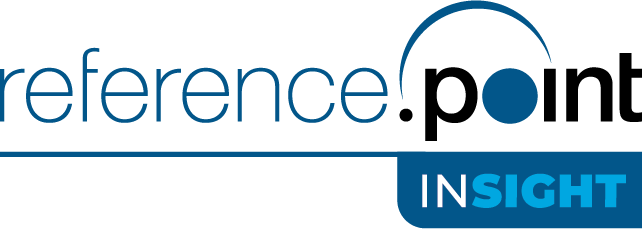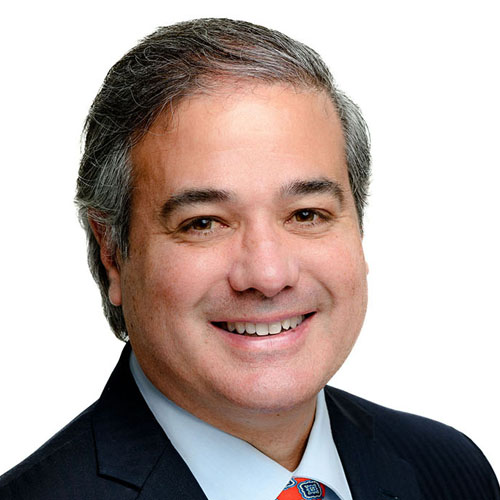
Elements of an Effective Corporate Governance Program Strengthen Your Organization with A Renewed Focus on Corporate Governance
May 2022
Straight To The Point
A strong Corporate Governance program can help financial institutions leverage strategic opportunities and withstand the most stressful and adverse conditions. This Point of View offers perspective on Corporate Governance and the important role it plays. Creating a renewed awareness and emphasizing the importance of a bank’s Corporate Governance program can help provide insights on best practices and avoid actions that could lead to future challenges.
Elements of an Effective Corporate Governance Program
To be effective, a Corporate Governance program should be commensurate with the bank’s size, risk profile and complexity. Larger or more complex banks require more sophisticated and formal board and management structures and practices. And regardless of size, governance frameworks must keep pace with regulatory changes as they occur. Leaders at the top must set the right tone. This can be accomplished most effectively by the manner in which they execute their responsibilities. Strong leaders are always inclusive in terms of seeking and rewarding a diversity of views by including a range of appropriate individuals in decision making. To ensure their strategies can be fully executed, leaders must also ensure that the right team is in place with the right level of critical subject matter expertise for the issues at hand. Great leadership teams seek out constructive challenge. And their execution aligns with their messaging.

Leadership
A sound Corporate Governance program begins with an engaged Board of Directors and Senior Management Team. Board and senior management members are ultimately responsible for charting and executing a bank’s future course. Leaders at the top must set the right tone. This can be accomplished most effectively by the manner in which they execute their responsibilities. Strong leaders are always inclusive in terms of seeking and rewarding a diversity of views by including a range of appropriate individuals in decision making. To ensure their strategies can be fully executed, leaders must also ensure that the right team is in place with the right level of critical subject matter expertise for the issues at hand. Great leadership teams seek out constructive challenge. And their execution aligns with their messaging.
Strategic Focus
A clearly defined and well-documented business strategy, including goals and objectives, provides the map that guides a bank to its desired destination. The strategic planning process is unique to each bank. Target markets, products, services, delivery channels and importantly target clients should be carefully selected within the context of the financial institution’s competitive strengths, strategic opportunities, applicable regulations, technological changes, and evolving customer expectations. An effective strategic planning process is supported by appropriate information, attended by the right people, and strengthened by open discussion and idea sharing.
Risk Culture
Risk culture influences a financial institution’s risk appetite and guides the amount of risk permitted to execute the business plan. To establish and maintain an appropriate risk culture, board and senior management members should identify the risks inherent in its business strategy and establish well-defined and measurable risk parameters consistent with its desired risk profile. Board and senior management members should regularly and consistently communicate risk expectations and establish controls to ensure the financial institution remains within the established risk culture and appetite.
Expertise and Structure
Even the best developed plans require the right people. A leadership team and personnel structure, commensurate with the bank’s size, risk and complexity, should be built.  Each team member should have the experience and skill needed to fulfill their responsibilities in a manner consistent with the organization’s strategic direction and goals. The expertise and personnel structure of each team should be reviewed, fine-tuned, and bolstered with regular training and developmental assignments to prepare personnel for future leadership opportunities and to maintain skill levels as circumstances dictate.
Each team member should have the experience and skill needed to fulfill their responsibilities in a manner consistent with the organization’s strategic direction and goals. The expertise and personnel structure of each team should be reviewed, fine-tuned, and bolstered with regular training and developmental assignments to prepare personnel for future leadership opportunities and to maintain skill levels as circumstances dictate.
Policies and Procedures
The board of directors is responsible for overseeing senior management’s development and implementation of policies and procedures. A bank’s policies and procedures should address, in sufficient detail, the complexity and risks of its key operational areas (e.g., Lending, IT/data management, Cyber Security, Interest Rate Risk, Third-parties, Compliance, etc.). A bank’s policies and procedures should clearly provide measurable targets with appropriate risk limits to prevent actions that could lead to an overall risk profile inconsistent with the financial institution’s risk culture and appetite. Policies and procedures should be reviewed and updated to address such areas as changes in the bank’s strategic focus, new regulatory expectations, and/or shifts in the business environment. Management needs to proactively provide tutorials and other training to the board to ensure that the board is current on evolving topics that are material to the institution. The board also has an important role in challenging management on critical issues and it is a best practice to ensure that the challenge and ensuing discussion is appropriately documented – a step often missed.
Internal Controls
Internal controls include the policies and procedures that financial institutions establish that provides beneficial guidance to staff as to how they should operate, and helps reduce risks and ensures they meet operating, reporting, and compliance objectives.2 A system of internal controls should measure, monitor, and manage critical risks, including senior management’s compliance with established policies and risk limits. Inadequate internal controls can lead to business decisions and activities that are inconsistent with the desired risk culture and can increase a bank’s vulnerability to adverse changes in its environment. Weak controls, slow escalation and poor monitoring often result in a delayed corrective action, which often fan the flames of a proverbial small fire and allow it become a massive conflagration given the delay in getting the right level of timely attention and corrective action.
Engagement
 The successful implementation of any business plan is highly dependent upon the engagement of an organization’s employees. A successful engagement strategy requires training, clear and frequent communication (it is hard to over-emphasize how important and how frequent the communication needs to be – this is often a surprise), measured accountability, and rewarding desired behavior. Involving employees in the process and seeking their input and feedback will foster company-wide buy-in of a bank’s strategic initiatives. Board and senior management members need to ensure their actions are consistent with their message. Failing to “walk the talk,” will quickly erode employee commitment to, and support of, strategic goals and objectives!
The successful implementation of any business plan is highly dependent upon the engagement of an organization’s employees. A successful engagement strategy requires training, clear and frequent communication (it is hard to over-emphasize how important and how frequent the communication needs to be – this is often a surprise), measured accountability, and rewarding desired behavior. Involving employees in the process and seeking their input and feedback will foster company-wide buy-in of a bank’s strategic initiatives. Board and senior management members need to ensure their actions are consistent with their message. Failing to “walk the talk,” will quickly erode employee commitment to, and support of, strategic goals and objectives!
Review and Update
The Board of Directors and the Senior Management team should regularly review and update the strategic plan, risk limits, policies/procedures, and internal controls to account for “whistle blowing” issues, consumer complaints, court decision, “close calls”, and operational risk failures highlighted in the press or through supervisory enforcement actions. Boards should include metrics on key staffing turnover and important regulatory findings. Boards should also request an annual update on key crisis manual procedures and key staffing plans. This process should be conducted within the context of changes that have occurred, or are occurring, in targeted markets, the economy, regulatory expectations, technology and customer needs. This process is critical in helping board and senior management members navigate the changing financial landscape and ensure the best path for future success.
Information
A program driven by incorrect or insufficient information will produce inaccurate results and lead to flawed decisions. Accurate and complete information is critical to each stage of the Corporate Governance process. Board and senior management members need to ensure that the information relied upon is timely, relevant, and comprehensive. Comprehensive and meaningful information is necessary to properly evaluate and adjust, if necessary, the bank’s strategic focus, risk culture, policies and controls to reflect the changing banking and regulatory landscape.
Conclusion
An effective Corporate Governance program is critically important for every organization. It’s so important to be proactive and establish or strengthen corporate governance programs during good times. It is especially important to be proactive and establish or strengthen corporate governance programs “when times are good.” The principles and programs need to be appropriately documented, clear, crisp and concise. Ultimately, our goal is to help you and your organization ensure risks are properly managed and help your organization thrive. Let our team of Corporate Governance experts assist your board and senior management team to establish and strengthen a successful, well-managed Corporate Governance program that includes proper structure, processes, and technologies. Ultimately, our goal is to ensure risks are properly managed and help your organization thrive regardless of what the future holds.
Meet the team

DIAN BROWN
Engagement Manager
- 35+ years of experience with the OCC including serving as Assistant Deputy Comptroller. Extensive experience with large and midsize bank supervision.
 THOMAS DUJENSKI
THOMAS DUJENSKI
Director
- 35+ years of leadership experience as a regulator and consultant. Former Senior Executive/Regional Director of the FDIC. CFE, CRCM & ACAMS.
 RICHARD TOLEDO
RICHARD TOLEDO
Director
- 20+ years of experience in leadership roles in large financial services firms covering operational risk, technology risk, compliance, project management, and large-scale transformations.
 JOHN HENRIE
JOHN HENRIE
Senior Manager
- 35 years of leadership experience as a bank regulator. Former Senior Executive/Regional Director of the FDIC.
[1] Comptrollers Handbook, Corporate and Risk Governance, Version 2.0, July 2019, Page 1 (Comptroller's Handbook: Corporate and Risk Governance | OCC)
[2] FDIC Manual of Examination Policies, Internal Routine and Controls, March 2015, Page 4.2-21 (INTERNAL ROUTINE AND CONTROLS (fdic.gov))
Table of Contents
About Reference Point
Reference Point is a strategy, management, and technology consulting firm focused on delivering impactful solutions for the financial services industry. We combine proven experience and practical experience in a unique consulting model to give clients superior quality and superior value. Our engagements are led by former industry executives, supported by top-tier consultants. We partner with our clients to assess challenges and opportunities, create practical strategies, and implement new solutions to drive measurable value for them and their organizations.
